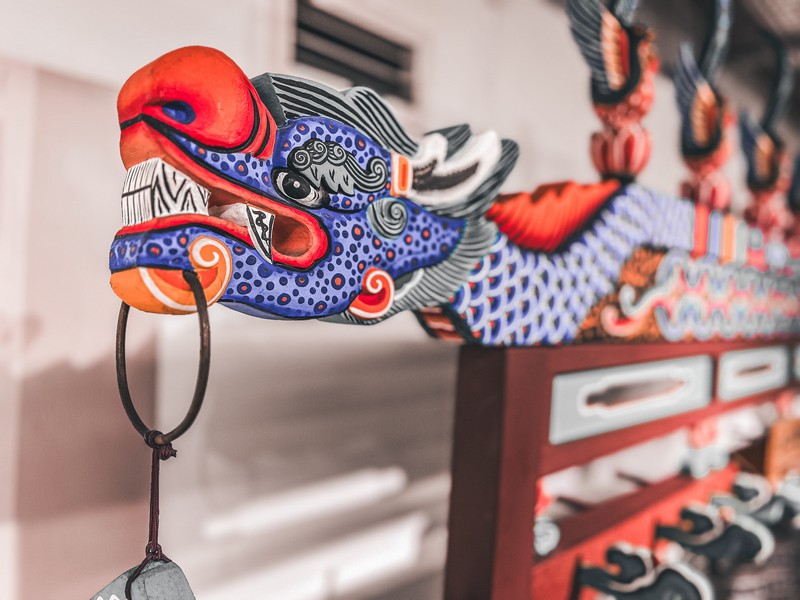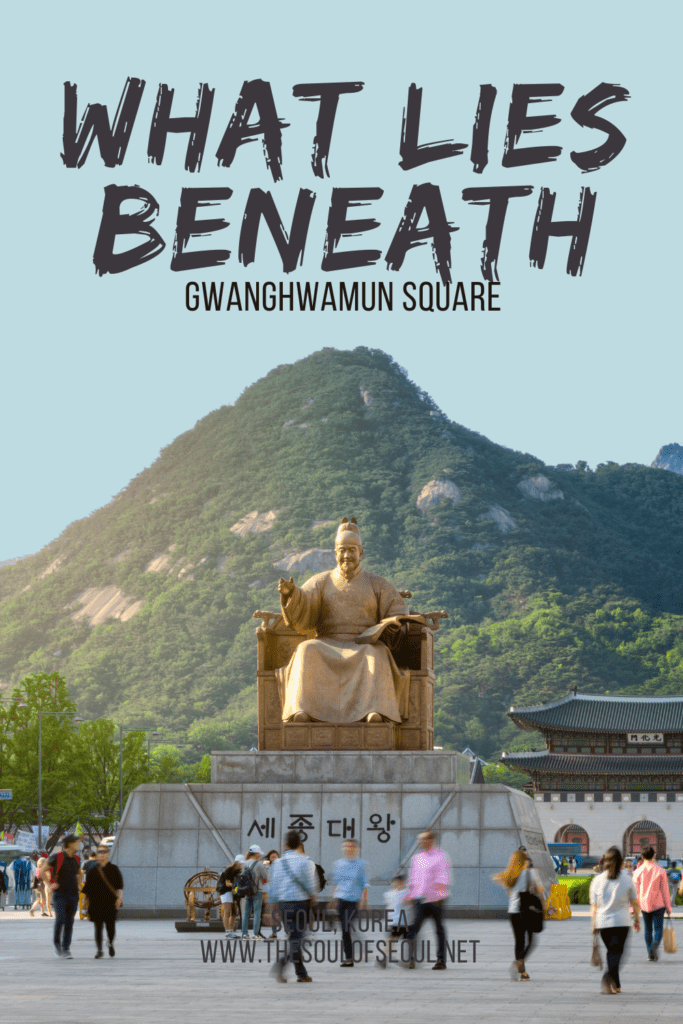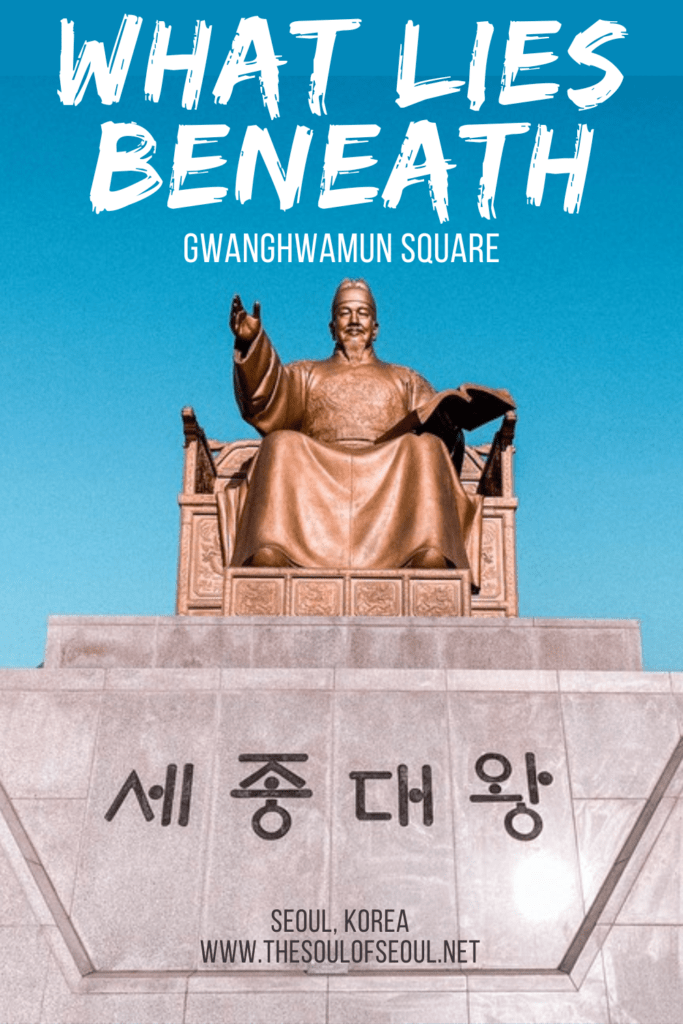Gwanghwamun Square: What Lies Beneath
Last Updated on May 27, 2024
How many times have you walked along Gwanghwamun Square? How many events have you seen at Gwanghwamun Square? Have you ever gone beneath the square that sits just south of Gyeongbokgung Palace in Seoul though?
The last time I was there and went down to see what was going on, I found the amazing space completely empty. As I made my way through the underground workings, I only came upon two groups of kindergarten students and their teachers. Because of that, I decided to write about what lies beneath Gwanghwamun Square and why you should really go to check it out.

- What is Gwanghwamun Square
- The Story of King Sejong (세종이야기)
- The Story of Admiral Yi Sun-sin (충모공 이야기)
- Experiences For Adults and Kids
(This post contains affiliate links, which means I receive a certain percentage of a sale if you purchase after clicking at no cost to you. Thank you for your support.)
What is Gwanghwamun Square
Gwanghwamun Square is a large space just south of the Gyeongbokgung Palace main entrance. The focal point of the square is a statue of King Sejong the Great, the creator of Hangeul, the Korean alphabet. There is also a statue of Admiral Yi Sun-sin and between these iconic gentlemen of Korean history, events are held year round for local residents and visitors to enjoy the pedestrian only square.

This open space in downtown Seoul, Korea has been a center stage for Korean politics, hosting massive protests at times, and is a place where people gather to witness major sporting events. It has become a symbol of both democracy and harmony.
In recent years, it went through a massive reconstructing to make it even more inviting for local residents and visitors which means you should keep an eye on this space which hosts numerous festivals, markets, and more.
How To Get Inside
While Gwanghwamun Square is always open, make sure you note that the halls beneath the square are not always open to the public.
- Address: 175 Sejong-daero, Jongno-gu, Seoul (서울특별시 종로구 세종대로 지하 175)
- Wondering how to get inside? There’s a door on the backside of the very popular King Sejong statue that everyone takes photos of. Look at the picture below to see what it looks like.
- Hours: Tuesday – Sunday: 10:00am ~ 6:30pm

The Story of King Sejong (세종이야기)
The Story of King Sejong (세종이야기) is a fabulous and FREE museum with exhibition zones, event spaces, and installations to tell the story of King Sejong’s scientific, artistic, military, and political feats.


King Sejong was responsible for some of the biggest achievements in the history of Korea. There is a space devoted to the invention of Hangeul as well as other scientific inventions and his military policy. If you’re visiting downtown Seoul, definitely take the time to go downstairs and look at the exhibits which cover a range of interesting topics.
Some interesting installations included:


Pyeonjong (편종)
This percussion instrument made of iron was imported from Song Dynasty in the 11th year, 1116, of Yejong’s rule during the Koryeo period and was used as an instrument for palace ritual music.
In the 11th year, 1429, of Sejong’s rule, a Jujongso (bell plant) was made and they started to produce their own instrument. It is played by hanging 16 bells on two levels of wooden frames. The sound is high when the bell is thick, and low when the bell is thin.


Pyeongyeong (편경)
Next to pyeonjong is this percussion instrument made of stone, which was imported from the Song Dynasty at the same time.
Later during the 7th year, 1425, of Sejong’s rule in Joseon Dynasty, pumice stone was found in Gyeonggi-do Namyang and the instrument began to be made domestically. It is played by hanging 16 ‘ㄱ’ shaped stones on two levels of wooden frames. The sound is high when the stone is thick, and low when the stone is thin.

Eo (어)
This percussion instrument called the Eo is used to sound the end of music and has the shape of a tiger with 27 saw tooth along its spine. It is played by hitting the back of its neck three times with a stick, followed by 3 consecutive scrapes of the saw teeth on the spine.

Angbuilgu (앙부일구)
This sundial in the shape of a cauldron has clock hands that change in shadow position according to the movement of the sun. The concave sundial shows the seasons and time together by including horizontal lines that represent the seasons and vertical lines that represent time.
Seokgakbon (석각본)
Above the sundial is an astronomical chart, which is the oldest form of astronomical chart from the Taejo period. In the round sky, there are total of 1400 stars and 282 constellations. The Korean agrarian society wanted to predict the weather by looking at the sky and their interest in astronomy was important, because they had to forecast by looking at the sun, moon, and stars.

Eojwa (어좌)
Eojwa is a Korean word for the royal throne and behind it is the Ilwolohbongdo (일월오봉도). Ilwolohbongdo is the name of a painting with the sun, moon, five mountain peaks, waves, and pine trees. It’s painted on a large folding screen.


The Story of Admiral Yi Sun-sin (충모공 이야기)
Hopefully you’ve heard of the infamous turtle ship, or Geobukseon, an important battle ship in Korean history that was created by Admiral Yi Sun-sin. After passing through The Story of King Sejong, there is a great section on The Story of Admiral Yi Sun-sin. Head down and you can see a replica of the ship as well as learn about the life and legacy of the admiral.

Geobukseon (거북선)
The Turtle Ship was a warship in the Korean Joseon Navy from the early 15th century up until the 19th century. Based on the panokseon, a type of combat ship, it served a significant role during the Japanese Invasion of Korea in 1592.
This model ship inside was built for visitors to experience the inside, and the interior was based on the Naval Academy’s model Turtle Ship. The size of this ship is reduced by 55% from the original size but it’s still pretty big and a great opportunity to see what the turtle ship was all about.



Choyogi (초요기)
There are a lot of interesting artifacts to learn about as well including military flags that were used by the commander of the army to direct the generals during war marching. The choyogi uniquely has the big dipper on the flag.
The big dipper has been thought to rule the universe and since been one of the constellations revered by Koreans. The 7th star of the big dipper is thought to be the star that enforces the rules of the heavens, and it is called ‘Yogwanseong,’ which carries the meaning that it is able to defeat any enemy.

Jwadokgi (좌독기)
This military flag is placed behind the commander of the army during marching and placed to the front-left of the commander’s stand when the army is stationary. The rectangular flag with black background has the Taiji mark in the middle symbolizing yin-yang and ideology, where the surrounding consists of writing or drawing that symbolizes a specific person, and also a drawing of posterior Eight Trigrams for divination.


Be sure to walk around taking in each area and exhibition. There are some great things to see and learn.



Experiences For Adults and Kids
There’s an experiential space to make a souvenir which is great for kids and adults. It’s open from 11:00am until 6:00pm on Tuesdays through Sundays. There’s also a fun game in the Story of King Sejong for kids to work on their aim from a turtle ship as well.
Tip: This is a great space to know about if you’ll be visiting downtown Seoul in winter and summer as well as you can take a break from the weather if you’re out and about downtown. There are also bathrooms inside.
Did you like this post? Pin IT!



